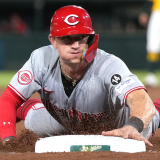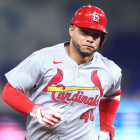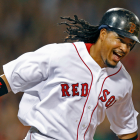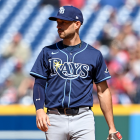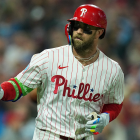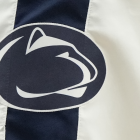Why you don't need to make big trades to win big and the Blue Jays are proving it
Many contenders have gone on to win the World Series without making a splashy trade

One year ago yesterday, the Toronto Blue Jays pulled off a blockbuster trade. In a six-player deal, they landed All-Star shortstop Troy Tulowitzki (and reliever LaTroy Hawkins), giving up an impressive package of young talent, led by top pitching prospect Jeff Hoffman.
Two days later, they shot the moon again, sending talented young left-handers Matt Boyd and Daniel Norris to the Tigers as part of a four-player deal that brought back ace southpaw David Price.
The all-in approach taken by the Jays and then-general manager Alex Anthopoulos worked brilliantly. After posting an underachieving 50-51 record through the day of the Tulo deal, Toronto went 43-18 the rest of the way. We can credit an improved bullpen and much better luck for a good chunk of that second-half surge, and still acknowledge that Price's pitching, combined with Tulo's dazzling defense, played a big role in the Jays making the playoffs for the first time in 22 years.
New direction, same results?
Anthopoulos would step down at the end of the season, dismayed over the organization's plan to have him answer to team president Mark Shapiro instead of maintaining the GM's free rein over baseball operations decisions. There were rumblings that Shapiro didn't like Anthopoulos's aggressive approach, and that he lamented the loss of multiple top prospects in the flurry of deadline deals.
When Ross Atkins took over as the team's new GM, and the Jays declined to make an offer to re-sign Price before he bolted to Boston for $217 million, many Toronto fans and media members fretted that the new regime might be overly conservative, costing the team a chance to build on its 2015 joyride and contend for a World Series.
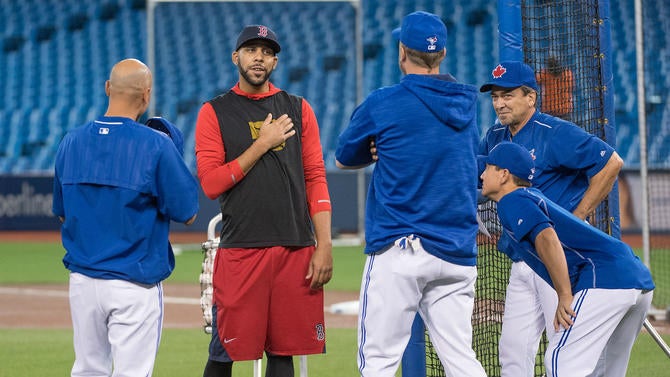
The prediction of caution has proven to be accurate. But the notion that the Jays would suffer for it might turn out to be wildly off base.
By making smaller, less splashy moves in the offseason, the new brass built a starting rotation that's been surprisingly good, with the three top starters all outperforming Price for a fraction of the cost. By making two more low-risk moves this week, the Jays upgraded their roster, and might have addressed two of their biggest weaknesses.
By moving incrementally, Toronto is now well positioned to make a run at another AL East title ... and to mimic a number of other contending teams that didn't go for broke at the trade deadline, and still went on to win it all.
Taking small steps
On Tuesday, the Jays pulled off their first deal of deadline week, sending 19-year-old rookie-league right-hander Hansel Rodriguez to the Padres for veteran outfielder Melvin Upton Jr.
Unlike Hoffman, Boyd, and Norris, Rodriguez didn't rank as anything close to an elite prospect; MLB.com rated him no. 18 in Toronto's system. Moreover, based on the money the Padres sent back, either San Diego GM A.J. Preller saw something in Rodriguez no one else did, or Shapiro and Atkins have some sort of weird baseball Jedi mind-control powers.
Upton plays plus defense, and is in the midst of a bounceback season in which he's on pace to top 25 homers and 30 stolen bases. Yet the Friars are covering more than $17 million in salary through the end of next season, leaving the Jays to pay just $5 million of Upton's remaining freight.
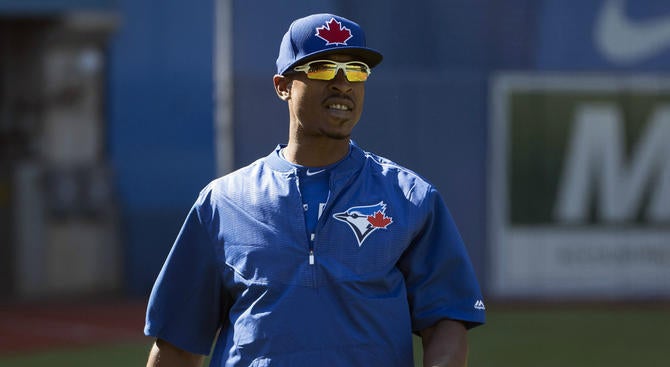
Michael Saunders and Jose Bautista rated as one of the worst pair of corner outfield defenders in the game, with Saunders battling the aftereffects of a spring knee injury and Bautista just off the disabled list after being shelved for several weeks due to turf toe. Upton's acquisition instantly upgrades that outfield defense weakness, lowers strain and injury risk for Saunders and Bautista by allowing both to see more time at designated hitter, and nudges the mediocre Justin Smoak to the bench.
Given the substantial price tag for even mediocre arms like Lucas Harrell and Dario Alvarez this week, giving up so little talent and so little money to acquire a player with that much utility to the team qualifies as both a low-risk move, and possibly a legitimate steal.
The Blue Jays' second trade this week bring a lot more uncertainty. By sending Drew Storen to the Mariners for Joaquin Benoit, the two teams exchanged right-handed setup men in the midst of lousy seasons. Benoit posted a 5.18 ERA in 26 appearances with Seattle this year, surrendering an ugly 15 walks and four home runs in 24.1 innings of work. Toronto's banking on Benoit returning to his 2013-15 form, when he flashed a 1.98 ERA with a strikeout-to-walk rate of nearly 4-to-1. With his velocity and K rate nearly unchanged compared to that dominant three-year stretch, there's some reason for optimism.
Moreover, the cost in this deal was once again minor: Storen pitched so poorly after coming over in an offseason trade with the Nationals that the Jays designated him for assignment. It's possible that neither team's trash turns into newfound treasure, but when the alternative is releasing a player outright or getting a bag of beans for him, there's little harm in rolling the dice.
Following a successful blueprint
If those are all the moves the Jays make between the start of this week and Monday's non-waiver deadline, they'd be in good company.
The 2014 Giants' big deadline move was to trade two decent-but-not-elite young arms to the Red Sox for Jake Peavy. The well-traveled right-hander was getting lit up in Boston, and didn't look like much more than a back-of-the-rotation innings eater. Instead, he flashed a 2.17 ERA in 12 regular-season starts with the Giants, then fired 5 2/3 shutout innings in the NLDS, before struggling later in the postseason.
The Giants actually lost ground in the NL West race after the trade, going from a tie for first place to finishing second at year's end, six games out. The (mostly) stand-pat approach worked out anyway, as San Francisco went on to win its third World Series title in five years.
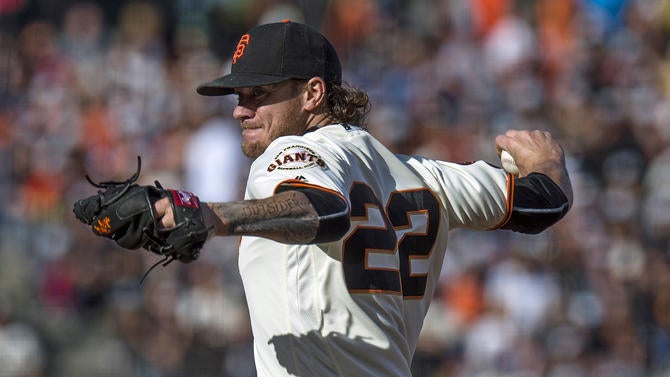
Multiple other recent contenders avoided sacrificing vast sums of cash or elite prospects and went on to become champions anyway. The 2010 Giants were active both before the non-waiver deadline and during the waiver-trade period of August, reeling in Cody Ross, Jose Guillen, Javier Lopez, Ramon Ramirez, and Mike Fontenot, all of whom went on to play in playoff games en route to the team's World Series triumph.
But in each case, the cost to acquire those role players was either minimal or essentially nothing. Even the flush-with-cash 2009 Yankees avoided headline-grabbing deadline deals, acquiring secondary pieces like Eric Hinske and Jerry Hairston, rather than raiding their farm system (or their endless money pile) for a big score.
None of this is meant to imply that all teams should go the conservative route for the next three days. The Orioles have real starting-pitching needs that must be addressed, even if you're a Kevin Gausman/Dylan Bundy optimist. The Indians have a woefully thin bullpen for a first-place club. The Rangers could use both a pitching and catching upgrade if they want to hold off the hard-charging Astros. A passel of NL contenders, including the Nationals, Giants, and Dodgers, are rumored to be seeking impact deals as well.
But in the Jays' case, the Hara Hachi Bu approach might be the right one. Rather than gorge themselves at the trade deadline buffet, they made two moves that have a chance to fill rare holes on an otherwise talented team. The starting rotation is deeper than it was at this time last year thanks to the savvy signings of J.A. Happ and Marco Estrada and a big breakout by Aaron Sanchez, mitigating the need for another David Price-style megadeal. The lineup is again loaded this year, with Saunders adding even more sock to complement MVP candidate Josh Donaldson and friends. And there's no need to spend big on an up-the-middle defensive upgrade this time, because Tulo's back and flashing his Gold Glove form at Rogers Centre ...
... and the Jays are an incredible 100-63 since adding him to the club last summer.
Throw in the massive uncertainty that comes with playoff baseball, and how tough it can be for any one trade pickup to truly be the guy who puts you over the top, and the Blue Jays might have a boring (but reasonable) rallying cry: Discretion is the better part of valor.






